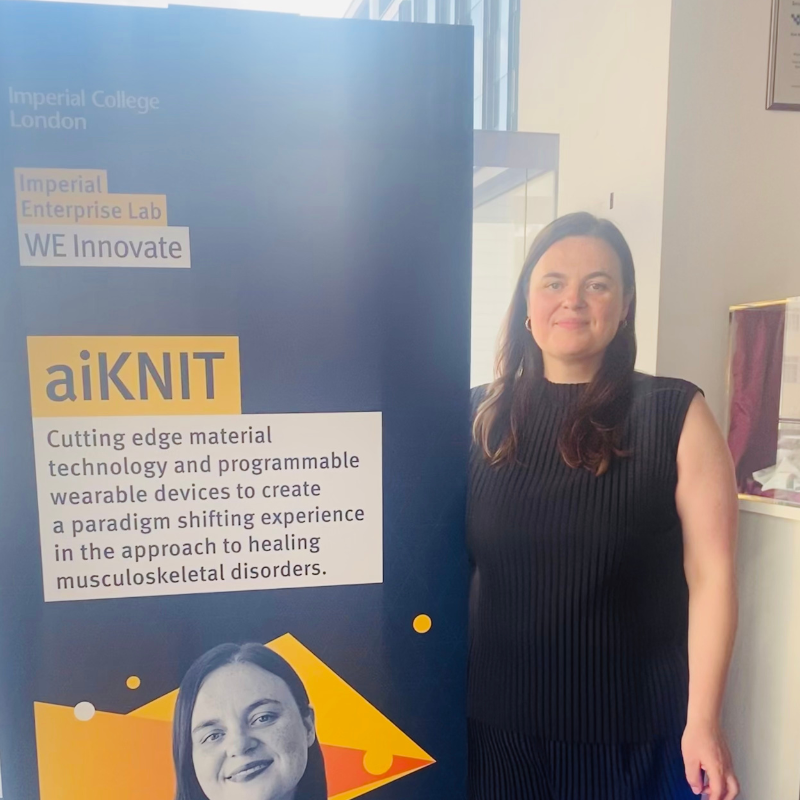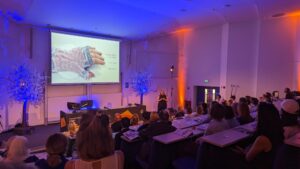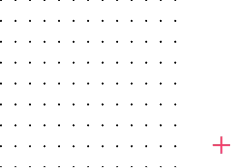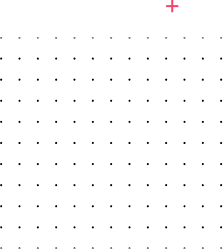Impact Innovators in the Zinc Ecosystem: Sophie Richter, founder of aiKnit

1.7 bn people worldwide world suffer from musculoskeletal disorders, a number we will only see grow as the global population ages. Yet the current solutions are not sufficiently improving patient outcomes + pain.
aiKnit is inventing ground-breaking material technology to alleviate the pain associated with these disorders, increasing the quality of life for patients and alleviating potential financial burdens. Our programmable devices change their material characteristics, such as stiffness and elasticity, supporting a patient’s recovery in a much more tailored and individualised way. This will shorten recovery periods + create fewer adverse side effects.
You can read more about the mission at the end of this interview with founder Sophie Richter.
To kick off, I’d love to hear more about your background and career path.
I graduated with a diploma in textile and material design in 2009 from Burg Giebichenstein, University of Art and Design in Germany. Following that, I got into the automobile industry by chance, where I started working at BMW back in 2010, carrying out bespoke material research for high-end series and future cars.
Through my time at BMW, I got interested in smart and programmable materials to understand how to create new experiences for future cars. For example, what if a car didn’t have a screen? How can materials guide us to interact with the interior of the car in a completely new way? I led a couple of research projects, working with an interdisciplinary team.
That nurtured my interest in diving deeper into early research, so in 2018, I became a visiting scholar at MIT at the Self Assembly Lab, where I initiated a project to develop adaptive inflatable seat concepts. During my time at MIT, I was also working on a project looking at climate-adaptive garments. I took this research further to integrate bio-sensing capabilities into fibres to develop smart material interfaces that change the way we heal and treat the body in the days to come.
Following that, I was keen to study again in a very interdisciplinary way. So I looked around and found a course at the RCA and Imperial College called ‘Healthcare and Design’, which was great because of the design aspect alongside the scientific. During COVID-19, I applied and studied part-time, allowing me to slowly transition away from my job at BMW, as I was ready to explore a new path which allowed me to apply my creativity and skills to create something of my own.
It was a great pathway for me, Imperial College and Royal College of Art have amazing accelerator programmes and incubator spaces, and speaking more generally, London is a fascinating and thriving place, especially for female founders. So that’s what brought me to London to build my startup!
How did you come across this challenge of musculoskeletal disorders, in particular?
It all started with my passion for material research and bridging different technologies to create new material systems (as I call them) which are useful, whether in a health application or sustainability. So it all starts from there.
I came to the particular context of musculoskeletal conditions during my master’s program at the Royal College of Art and Imperial College London, which is a health-related program. By looking at various areas where I could apply my work, musculoskeletal conditions seemed fascinating and relevant.
Generally, I want to understand how new novel technologies can make people’s lives easier in many other contexts. For example, how we can improve space travel with these adaptive materials or for those who live in extreme environments to cope with the increasing threats of climate change. This is a starting point and a proof of concept to see how material systems can influence physiology and the bodily system. But there are many other applications.
How would you define success for this technology and aiKnit?
Success is if the products I’m developing positively impact people, changing lives for the better. I am incredibly thankful to be part of the Healthy Ageing Catalyst Programme and to explore my material concepts in this context of healthy ageing. and supporting people to live longer and healthier. It’s a complex challenge to solve. I’m still on my way to developing the prototypes and testing them with users. I’ve gotten good feedback so far but there is much more to explore and learn about. You have to start small, focusing on one thing for a couple of years and then see how you can grow from there.
I’m more of a visionary thinker. I like imagination & vision, and then I have to pull myself back, go step by step and tackle one challenge at a time.
When you were starting your entrepreneurial journey, which risks did you predict to come up in this journey?
It’s well-known that startups are very uncertain; there are a lot of uncertainties! You will not have a steady income, you have to raise funding yourself and when things go wrong, you are entirely responsible for yourself! You can’t just switch off at the end of the day and hope things will sort themselves out.
You are responsible for every step – all the successes and failures. It’s an enormous challenge, but there’s an opportunity to see what you are capable of.
There are many fascinating yet risky challenges. But at the same time, with everything you overcome, you grow! You learn, which improves your confidence.
Plus, the more uncertain things are, the more beautiful things can be. The most novel things only happen in ambiguity and uncertainty. And even if things fail, you have to continue. You must approach this journey with some bravery to see how it goes.
What are some of the main challenges in this specific space you’ve had to overcome in this space?
I’m learning that you must understand what the user wants rather than just innovating technology. You must listen closely to the user and develop something that solves their needs and pain points.
Technology has to serve a purpose – it can inform the user to show what’s possible, but there has to be a symbiosis of tech development and how it solves a problem for the user.
At BMW, we could invent visionary concepts, especially for future cars. I enjoyed this the most.! For my last project at BMW, I was developing a show car with a completely transparent dashboard that featured an interactive hologram the user could interact with.! And that’s cool to design, but it will stay in a show car.
But a startup has to work; the solution has to be user-centered.
What excited you about developing these ideas at Zinc VC?
During one of my last accelerator programmes at Imperial College, one of my cohort members suggested I apply for the Healthy Ageing Catalyst Award. That’s how I came across the programme at Zinc.
I’m thankful I got accepted and can work with the Zinc team, who are all incredibly supportive, passionate and smart. I always look forward to the teaching and the mentoring/coaching sessions.
Outside of funding: what did you value most in that program?
For me, it’s the people! There are similarities between programs such as market discovery, financial modelling, customer discovery etc. Everyone explains them slightly differently, but ultimately, it’s very similar.
What I like about Zinc are the people. Everyone I’ve interacted with has been supportive and encouraging. I got several opportunities to pitch AIKNIT in front of investors, researchers and specialists from the field, such as the Healthy Ageing conference and most recently the Catalyst Accelerator Showcase. I feel very supported by everyone at Zinc.
On top of that, the material being taught and the expertise brought in has been great. I also love the learning dashboard on Notion that we use with everyone updating about available grants. It’s a good resource; people are constantly adding to it, trying to add more to help us grow.
The network has also been valuable for my user research, which I’ll utilise once my prototypes are ready. I am planning to collaborate with partners at Zinc, such as Voice, to test my prototypes with users and get valuable feedback.
So it’s a combination of all these things. But for me, the people stand out!
I’m still in the process, but the sessions with Luke, my mentor, are great conversations about approaching technology development, strategy, and things to consider for intellectual property and market research. We are still in development, but he is a sparing partner, offering a new perspective on certain challenges. So that’s been enriching: a second brain.
In your opinion: how can the UK become the place for innovation and groundbreaking solutions for the health of people and the planet?
One area of improvement could be the interdisciplinary work between departments within a university or across institutions, which would facilitate research to make it more varied.
I highly enjoyed being at MIT because you can sit in all the other courses if you’re interested in other subjects such as physics, biochemistry, and informatics. Everyone is open to collaboration and discussion – it’s a different mindset to approaching interdisciplinary work. That’s something I noticed was different in the UK. That’s a barrier to excellent research because now, we must bridge various topics and disciplines, merging them to create something entirely new! It’s not just within science but design, art, and music. Then we can create something truly interdisciplinary that solves problems.
London is great for funding possibilities, accelerator programs and startup support. But there’s this element lacking.
There’s also space to make visionary goals a bit more… visionary. For example, at MIT it felt more edgy and out of the box. Perhaps we could also push the boundaries further here!
Perhaps it’s due to regulations or restrictions set within the system or institution. There are many restrictions already in place. People can get confined in these systems.
What would your advice be to anyone looking to start this entrepreneurial journey? What would your advice be?
Anyone needs to know that it’s a tough journey with lots to learn, tackle and overcome. It takes time to develop your ideas + solutions. There’s a lot of uncertainty; you need persistence, but at the same time, it should be fun!
But you must look forward to your work. The work and challenges should give you pleasure. Otherwise, it becomes a constraint! Anyone interested, curious, and who wants to make an impact will be naturally drawn to this. It needs a sense of curiosity, imagination and adventure! This route is for someone who doesn’t want to be confined in a structure and wants to take their career into their own hands.
That was me! I couldn’t see myself operating in the automobile system for another 20 years, in a hierarchical and all-male-dominated industry with little change. I had to leave!
Where would you like to see yourself in the future? Do you have any specific goals for your career?
One of the biggest goals would be to see that you make an impact with whatever you’re developing. Apart from the company being successful and perhaps remunerative, I hope to see my contribution to society positively.
My dream would be to develop this into a very interdisciplinary, creative startup where I can bring in different disciplines where I can bring in people from different disciplines to tackle challenges and find solutions to problems that even don’t yet exist.
One of my favourite designers is Neri Oxman. She is an architect, designer, artist and scientist all in one, and was a former professor at MIT and now has launched her own company. The way she explores and entangles various disciplines to develop an entirely new approach to design inspires me.
I am aware that this will be a long journey and process, but my passion, curiosity and drive keep me going. There is a saying that one shall take the longer and scenic route to reach your destination, that is where one will discover all the beautiful details and learn the most. I am enjoying each step of my journey, and I am very excited to build my very own with AIKNIT.
This article is an adapted summary of an interview between Sophie Richter, and Lara from the Zinc team. You can read more about AIKNIT here.

Join the Zinc community
Stay up to date with all Zinc updates and future posts as part of our fast growing community.
Featured Resources
Zinc Impact Report 2024
Zinc’s mission is to make the UK the best place to successfully start a venture which can have a massive impact on the health of people and the planet.
Increasingly, we are building deeper science ventures that serve global, industrial customers in environment and health, giving access to impact at a global scale.
Our 2024 Impact Report explores the challenges that need to be tackled to empower and enable talented founders from around the world to solve critical health and environmental challenges at scale, from here in the UK.
This report showcases success stories from the Zinc portfolio, and highlights how Zinc – and our growing community of hundreds of Founders, Fellows, Coaches, Partners and Funders – are working together to build a world-leading “Science-for-Impact” ecosystem for inception stage ventures in health and environment.
Impact Report 2023
We started Zinc with the hypothesis that missions are an effective way to attract highly ambitious, talented and experienced groups of innovators, who might not recognise themselves as “classic entrepreneurs” but are ready and able to start a new commercial and successful venture to tackle some of our most pressing societal issues.
The world has overcome the sorts of challenges we face today when it has adopted a mission-based approach to the biggest problems and brought together world-class talent to invent and innovate, e.g: NASA and landing a man on the moon, the LSE blueprinting the British welfare state, or the Gates Foundation aiming to eradicate diseases.
On this basis and assumption, we designed Zinc as a new mission-based Venture Builder — a place where global talent, ‘impact makers’, can join to experiment and develop new solutions to our most pressing societal issues.

